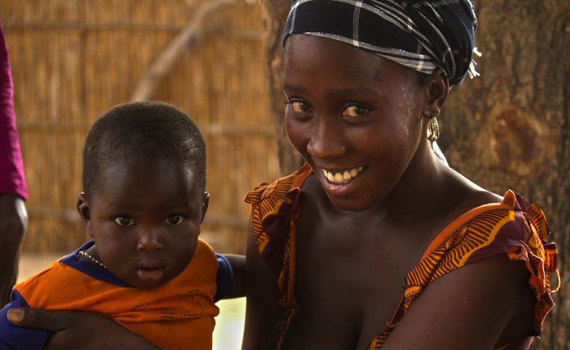In rural Senegal, a mother visits the health center each month, where the nurse places a small dot on the curve of her child's growth card to make sure he is gaining enough weight. She then measures his height to see if he is reaching his optimal growth potential. If the nurse sees that the child is not gaining weight, the health worker talks with the mother to learn how the child has been eating and if the child has been sick, ensuring he gets appropriate treatment and optimal nutrition based on foods that are available.
This is like a report card on growth and provides the chance to overcome health challenges during a critical time in a child's rapid development. This process is working well in Senegal, which has seen an improvement in nutrition for many of its children.
What about nutrition improvement for all children? Previously, child-based nutrition data has been inconsistent and dated, leaving an unclear picture of where, how and why we are missing the unreachable.
However, with the recent launch of the Global Nutrition Report, we have, for the first time in the last 20 years, an up-to-date and succinct overview of global malnutrition. This Report includes data that covers all forms of malnutrition, from stunting to obesity, and for all ages. It looks at country-level and global-level progress on addressing malnutrition and all of its drivers for 193 member states of the United Nations. Since the last publication of this Report, it is increasingly clear that malnutrition happens on both ends of the growth curve - underweight and overweight - both with implications for individuals, health systems and societies.
Underweight continues to put children at risk of infections and even death. Overweight is not only a problem among industrialized countries and tells us that good nutrition means more than just intake of calories. The resulting chronic and non-communicable diseases of hypertension, diabetes and other cardiovascular health issues are increasingly weighing on the already stretched health systems in developing countries.
Sometimes underweight and overweight exist under the same roof. Another hunger can exist in both groups: micronutrient deficiencies, or hidden hunger, as a result of poor diet quality. A child can fail to thrive when a family doesn't have access to a variety of affordable nutrient dense foods.The ease of access for most families to low cost products such as oils, flours and sugars will provide energy, and in many cases excess energy, but these one-staple diets lack the needed micronutrients that protect health and well-being. Money alone will not solve the malnutrition situation in a country: strategic spending to improve nutrition will be a worthwhile, and necessary, investment for countries.
The Global Nutrition Report provides the opportunity to think about reducing both underweight and overweight malnutrition. We don't want to shift the growth curve from underweight to overweight, we want to improve the quality of diets, reduce infections and illness, and ensure that mothers, children, families, communities and countries have access to the micronutrients they need for optimal health and development.
A Senegalese mother with her young child, after visiting a health post.

